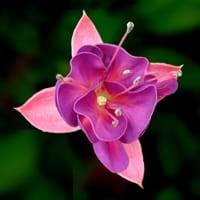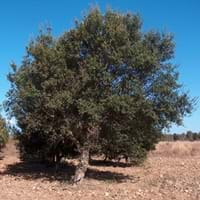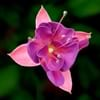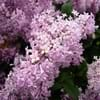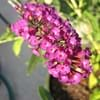Life Span
Perennial
Perennial
Type
Tender Perennial
Shrub
Types
Fuchsia Decidua, Fuchsia Fulgens, Fuchsia Splendens, Fuchsia Microphylla
Not Available
Number of Varieties
Not Available
Habitat
Forest edges, Woods
Hills, Lower slopes, open Woodlands
USDA Hardiness Zone
9-10
4-8
Sunset Zone
16, 17, 23, 24
A3, 1a, 1b, 2a, 2b, 3a, 3b, 4, 5, 6, 7, 8, 9, 14, 15, 16, 17, 18, 19, 20, 21
Habit
Arching/Fountain-shaped
Upright/Erect
Flower Color
Orange Red
Light Green
Flower Color Modifier
Not Available
Not Available
Fruit Color
Not Available
Brown, Light Green, Lime Green
Leaf Color in Spring
Purple, Dark Green
Green, Light Green
Leaf Color in Summer
Purple, Dark Green
Green, Light Green
Leaf Color in Fall
Purple, Dark Green
Red
Leaf Color in Winter
Unknown
Not Available
Leaf Shape
Long Linear
Lobed
Plant Season
Spring, Summer, Fall, Winter
Spring, Summer, Fall, Winter
Sunlight
Full Sun, Partial Sun, Partial shade
Full Sun, Partial Sun, Partial shade
Growth Rate
Medium
Medium
Type of Soil
Clay, Loam, Sand
Clay, Loam, Sand
The pH of Soil
Acidic, Neutral
Acidic, Neutral, Alkaline
Soil Drainage
Average
Well drained
Bloom Time
Indeterminate
Late Spring, Early Summer
Tolerances
Drought
Drought, Salt
Where to Plant?
Container, Ground, Pot
Ground, Pot
How to Plant?
Seedlings, Stem Planting, Transplanting
Seedlings
Plant Maintenance
Medium
Low
Watering Requirements
Requires regular watering
Average Water Needs, Requires regular watering, Requires watering in the growing season
In Summer
Lots of watering
Lots of watering
In Spring
Moderate
Moderate
In Winter
Average Water
Average Water
Soil pH
Acidic, Neutral
Acidic, Neutral, Alkaline
Soil Type
Clay, Loam, Sand
Clay, Loam, Sand
Soil Drainage Capacity
Average
Well drained
Sun Exposure
Full Sun, Partial Sun, Partial shade
Full Sun, Partial Sun, Partial shade
Pruning
Prune in spring, Prune lower leaves, Remove dead or diseased plant parts, Remove deadheads, Remove shoots
No pruning needed
Fertilizers
All-Purpose Liquid Fertilizer
No fertilizers needed
Pests and Diseases
Rhizoctonia Root Rot, Rust
Red blotch, Spider mites
Plant Tolerance
Drought
Drought, Salt
Flowers
Yes
Insignificant
Flower Petal Number
Single
Single
Foliage Texture
Medium
Medium
Foliage Sheen
Matte
Matte
Attracts
Hummingbirds
Birds
Allergy
Asthma, Hay fever
Asthma
Aesthetic Uses
Showy Purposes
Landscape Designing
Beauty Benefits
Not Available
Not Available
Environmental Uses
Air purification
Air purification, Forms dense stands, Nesting sites for birds, No fertilizer, pesticides, or herbicides needed, Prevent Soil Erosion, Shadow Tree, Windbreak
Medicinal Uses
Not Available
No Medicinal Use
Part of Plant Used
Flowers, Fruits
Bark, Stem
Other Uses
Not Available
Used as firewood, Used for woodware, Used in biomass, Used in construction, Used in Furniture, Wood is used for ship building, Wood is used in construction, Wood log is used in making fences
Used As Indoor Plant
Yes
No
Used As Outdoor Plant
Yes
Yes
Garden Design
Bedding Plant, Container, Feature Plant, Foundation, Hedges, Tropical
Cutflower, Feature Plant, Foundation, Hedges, Mixed Border, Screening, Wind Break
Botanical Name
FUCHSIA triphylla
EUONYMUS phellomanus
Common Name
Fuchsia
Cork Oak
In Hindi
फ्यूशिया
कॉर्क ट्री
In German
Fuchsie
Cork Tree
In French
Fuchsia
Arbre de Cork
In Spanish
Fucsia
Árbol de corcho
In Greek
φουξία
Cork Tree
In Portuguese
Fúcsia
Cork Tree
In Polish
Fuksja
Cork Tree
In Latin
Fuchsia
Cork ligno
Phylum
Magnoliophyta
Anthophyta
Class
Dicotyledonae
Dicotyledonae
Family
Onagraceae
Celastraceae
Clade
Angiosperms, Eudicots, Rosids
Angiosperms, Eudicots, Rosids
Tribe
Not Available
Mirini
Subfamily
Not Available
Mirinae
Number of Species
Not Available
Season and Care of Fuchsia and Cork Tree
Season and care of Fuchsia and Cork Tree is important to know. While considering everything about Fuchsia and Cork Tree Care, growing season is an essential factor. Fuchsia season is Spring, Summer, Fall and Winter and Cork Tree season is Spring, Summer, Fall and Winter. The type of soil for Fuchsia is Clay, Loam, Sand and for Cork Tree is Clay, Loam, Sand while the PH of soil for Fuchsia is Acidic, Neutral and for Cork Tree is Acidic, Neutral, Alkaline.
Fuchsia and Cork Tree Physical Information
Fuchsia and Cork Tree physical information is very important for comparison. Fuchsia height is 45.70 cm and width 45.70 cm whereas Cork Tree height is 240.00 cm and width 180.00 cm. The color specification of Fuchsia and Cork Tree are as follows:
Fuchsia flower color: Orange Red
Fuchsia leaf color: Purple and Dark Green
Cork Tree flower color: Light Green
- Cork Tree leaf color: Green and Light Green
Care of Fuchsia and Cork Tree
Care of Fuchsia and Cork Tree include pruning, fertilizers, watering etc. Fuchsia pruning is done Prune in spring, Prune lower leaves, Remove dead or diseased plant parts, Remove deadheads and Remove shoots and Cork Tree pruning is done No pruning needed. In summer Fuchsia needs Lots of watering and in winter, it needs Average Water. Whereas, in summer Cork Tree needs Lots of watering and in winter, it needs Average Water.
